A kitchen should be as functional and clutter-free as possible. Here’s how to set it up and keep it that way.
If you’re about to embark on a move, it’s the perfect time to take stock of what you own and how you plan to find a purposeful, proper place for each and every item that is coming along with you.
I give each of my moving clients a proprietary list of things they need to do before a move; it spans 11 pages and took almost a year to create. That “To Do” list does not address the functional use of space. It deals with just about everything else.
This blog cannot provide that proprietary list, but it will show you some of the things that I show my clients—how to maximize storage in drawers, cabinets, closets, and shelves, particularly when planning a move or a renovation.
There’s no better place to start than in the kitchen. (Next month, we’ll tackle closets, bookshelves, and other storage areas.)
A Simple Jigsaw Puzzle
Your first order of business will be to examine your new kitchen space thoroughly. Go to your new home and count the drawers in your new kitchen. Measure their width and length. Understand the new space. Does it need to be reconfigured? Can you convert any stationary shelves to more practical and convenient roll-out shelves? Is there an area with vertical slats to store trays, baking sheets, etc.?
Next, you need to look at what you own and make some simple calculations. What will you take with you and where will you place it in your new kitchen? I understand that this may seem hopelessly overwhelming when you’re staring at a stack of dishes, a jumble of whisks, odd baking accoutrements, and (of course) the dreaded Junk Drawer of Doom.
When you break it down into a piece-by-piece strategy, however, it’s really like a very simple jigsaw puzzle—the wooden kind for very young children, in which every item has and obvious and proper resting place. And I assure you that there will be a place for every item that you truly need. Everything else either doesn’t belong in your kitchen or belongs in a donation center.
Seeing Double (or Triple)
Pick the best of what you’ve got before you move. If you have three identical skillets, only one of which you always use, why keep the other two? Don’t pay someone to move them into your new kitchen.
The same is true for cake pans and muffin tins. If you’re an avid confectioner, perhaps you use them frequently. Or perhaps you own about five muffin tins—all with baked-on residue and ancient grease—but haven’t made cupcakes since your daughter’s Barbie-themed fifth birthday (she’s now 42). If you really feel compelled to keep one, keep the cleanest one.
But here’s the general rule: If you haven’t used it in your existing home in the past year or so, you’re not going to use it in your new home. Some classic standards of non-use: the fondue pot, the 50-cup percolator, the electric Salton warming plate, the box of escargot shells—shall I go on or do you get the idea?
Flatware and Knives
First, how much flatware do you own? Stack up your butter knives, small spoons, soup spoons, dinner and luncheon knives; and dinner, luncheon, and dessert forks, etc. If your basic flatware is not used for entertaining, you need only a limited amount per person in your home.
Flatware should sit nicely in a drawer to the right or left of the dishwasher, so that you can easily put it away. Measure your drawer, count the number of pieces and the number of place settings, measure the length of each piece in the place setting and the serving pieces. Now design a grid that will fill your drawer(s) with small containers for each type of piece (see photo below). Go to The Container Store and purchase a bin for each type of flatware, so that it stays snug in the drawer and doesn’t rattle around. (Make sure to take your grid with all the measurements, and bring a tape measure with you to the store to measure the divider containers you would like to buy.)
Those wooden blocks that are used to store knives on counter tops are dreadful dust collectors, not to mention a waste of counter space. One solution is to install a magnetic strip and hang your knives neatly on the wall—but this is a dangerous prospect for people with young children! And do you want to put holes in your beautiful tile backsplash? Instead, place your knives in a wooden knife-storage container inside a drawer. Preferably, this drawer will be located under the counter where you do all your prep-work. Knife holders do not need to be very wide as they come with two-tier capacity (see photo below) and can hold a lot of knives and still leave room for other related items.
You want your kitchen counters to be as clutter-free as possible. This should be one of those “no duh” moments, but clutter-free counters make it far easier to cook, prepare, and serve food. And that’s what kitchens are for, right?
If you don’t entertain large groups of caffeinated people daily, put that big coffee pot away. If you don’t bake on a daily basis, you don’t need a giant stand mixer hogging valuable real estate on your countertop. Put these items in lower cabinets, where you can find them and pull them out when you need them. Functional items that you use on a daily basis, such as the toaster oven, can merit one of the coveted spots on your countertop. If you use something more than three times per week, leave it out. When was the last time you used the Vitamix or the Cuisinart?
If you cook, put common utensils such as spoons, ladles, and spatulas in a container right by the stove. I use a round, stainless steel container to hold these utensils, while specialty items that I use less frequently are kept in a drawer. These include my baster, pastry brush, and ice cream scoop (see photo below). Wax paper, Saran Wrap, and aluminum foil can all be located in a drawer close to the fridge.
Many kitchens have gorgeous backsplashes, but no practicalities such as outlets. To get around this, you can attach under-cabinet outlet strips on the back edges of your upper cabinets. Wires go straight up and do not trail along the counters, providing more plug-in spaces than wall outlets.
Finally, people tend to put all kinds of decorative tzotches on their counters and windowsills. But in a kitchen, the air is rife with grease particles and moisture. Kitchens are not clean, and are thus not a good home for space-wasting dust collectors that get in the way of a quick wipe down/cleanup. Please don’t do it!
Spices and Sundries
I like to keep nuts, sunflower seeds, and pumpkin seeds handy for snacking and cooking. If you want to keep these out, you can purchase jars that close with a clip and that stack up on a counter against the backsplash. The lid flips up and the spoon slips in!
A great way to store your spice collection is to hang baskets on the inside of cupboard or pantry doors; this will allow you to store 50-60 spice jars in a neat, space-saving fashion. (See photo below.) You don’t have to be neurotic like me and arrange them in alphabetical order, but it will certainly help you locate what you need faster.
If you keep avocados, onions, garlic, and the like out on your counter for ripening and easy access, don’t use a bowl. Use something flat, such as that large, beautiful platter that never makes it to the table. In a bowl, you will invariably find a flattened tomato, a moldy onion, or a wizened lemon that you forgot about at the bottom, and it will need to be tossed.
The Dreaded Junk Drawer of Doom
Finally, we arrive at everyone’s bugaboo, the ubiquitous junk drawer. What’s in yours? If you’re like many, your junk drawer contains coupons you never use, keys to doors in homes you lived in five years ago, bits of string, paper clips, dusty birthday candles, batteries, coins, rubber bands, pens that no longer write, etc.
You do not need a junk drawer. Some of the things in your junk drawer may be useful, but they should be relocated. For example:
- Take your coupons, paper clip them together, and put them in the car, so you’ll have them right there when you’re shopping.
- Put your birthday candles in a drawer right next to the spatula that you use for frosting cakes.
- Batteries can be bagged and stored in the back of the refrigerator. They will last much longer in a cool environment.
- Scotch tape, a stapler, and string are useful, and should be in everyone’s kitchen. I keep mine in the cabinet right next to the measuring cups (see photo below).
- Your pad of paper and pen can be placed next to the phone to capture important notes. Better still, hang a whiteboard or use an iPad—the latter is where I keep my grocery list, and it can travel with me to the store.
I hope these tips have been helpful, and now I’d love to hear from you. What spatial challenges do you have in your existing home or in the home that you are moving into? What particular storage areas cause you the greatest angst? I’ll be happy to address these questions and more in a future blog!
Best wishes,
Sharon
646-784-3073
www.360demenager.com
Subscribe to Receive My Newsletter:

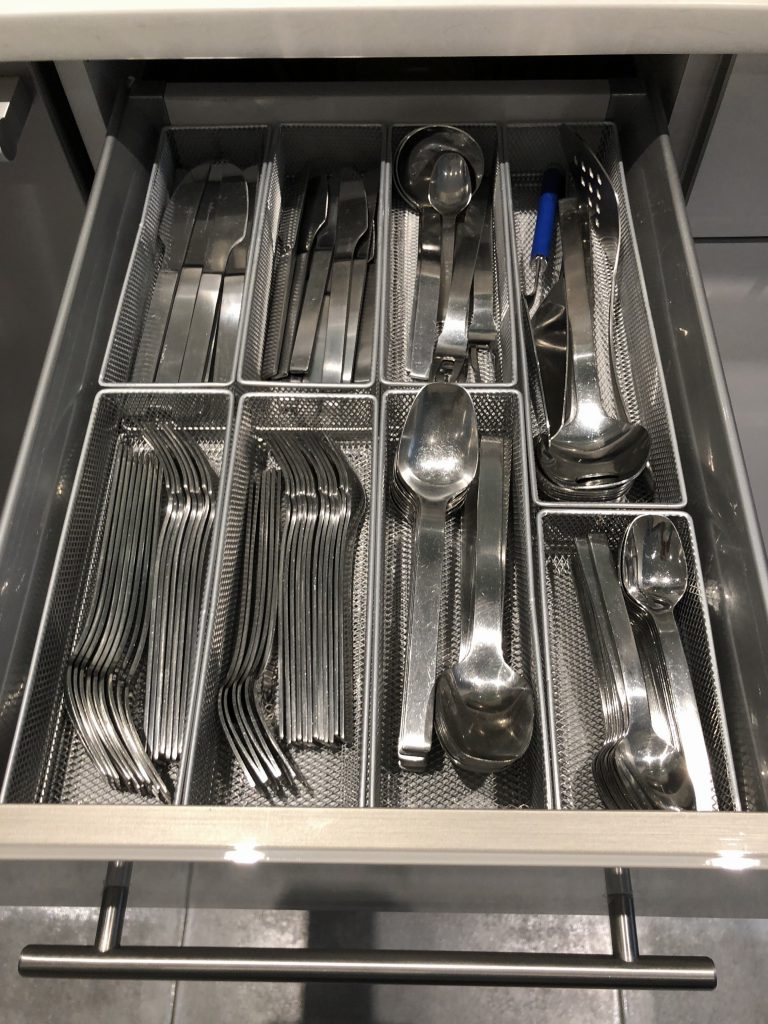
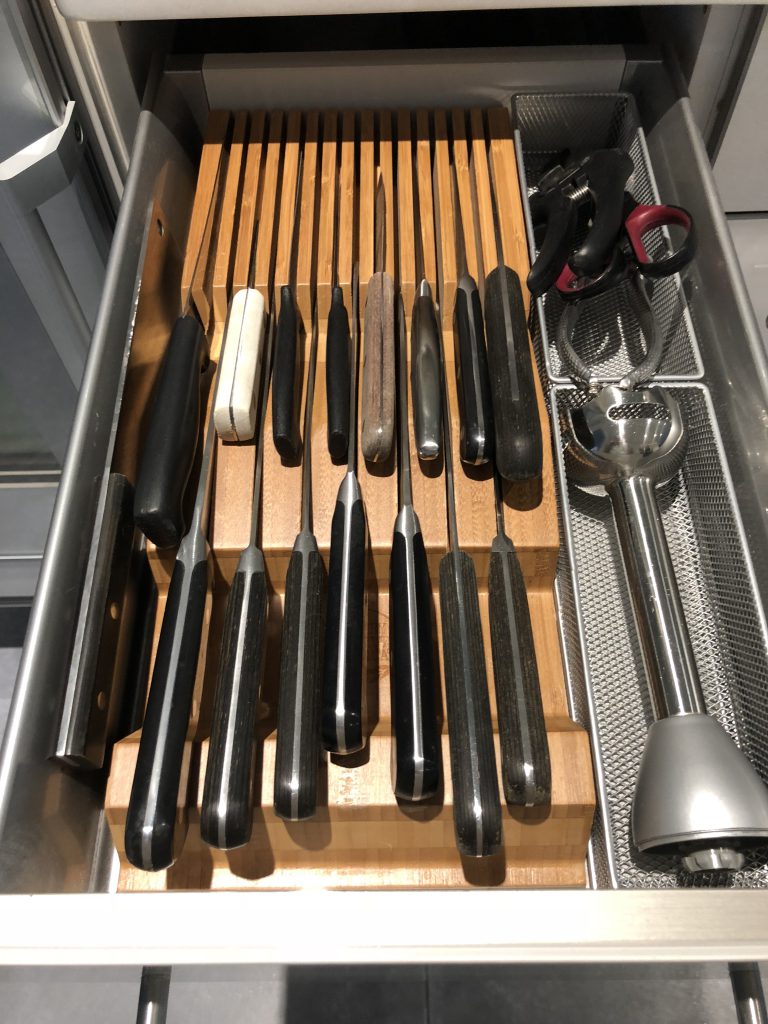
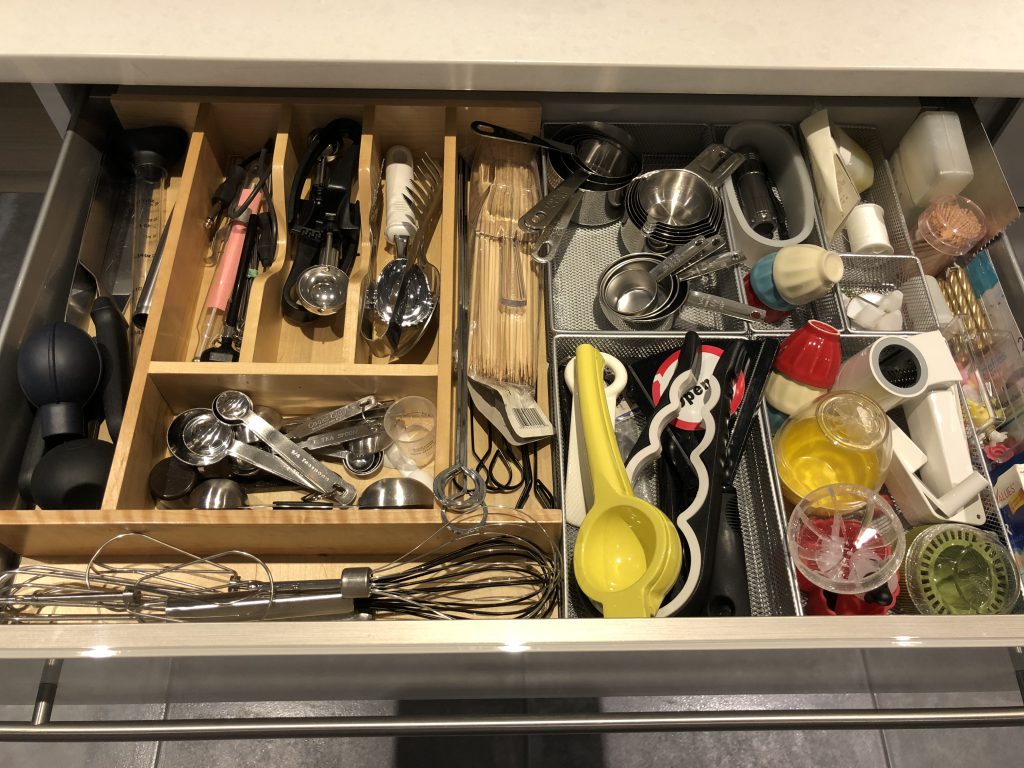

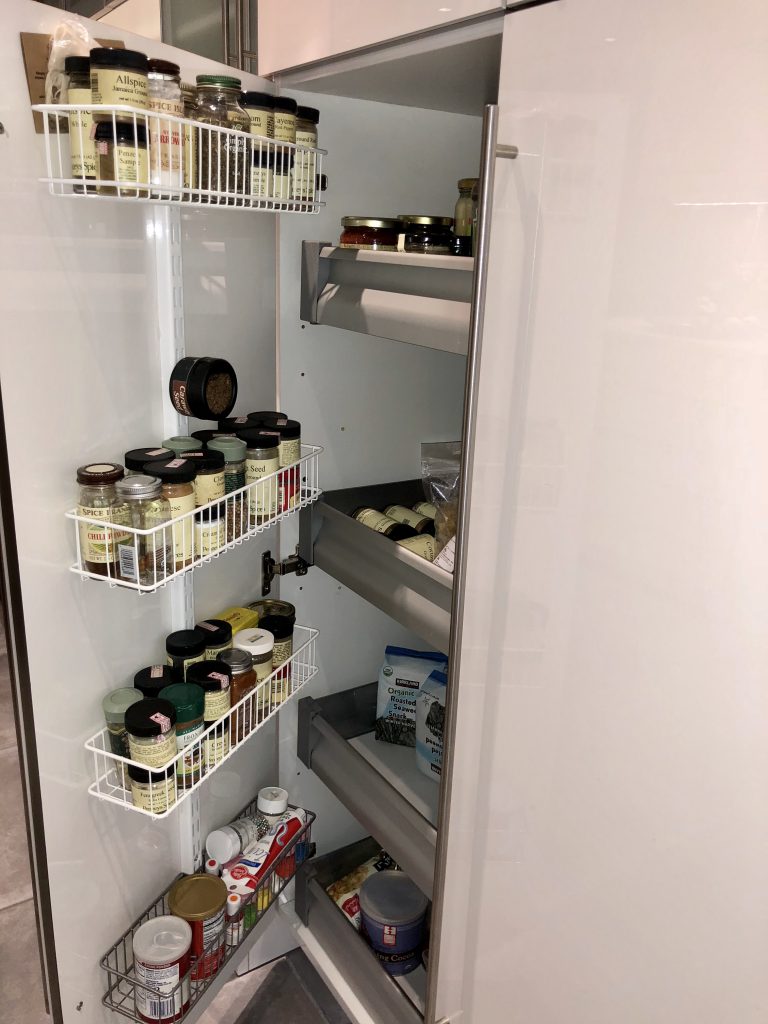
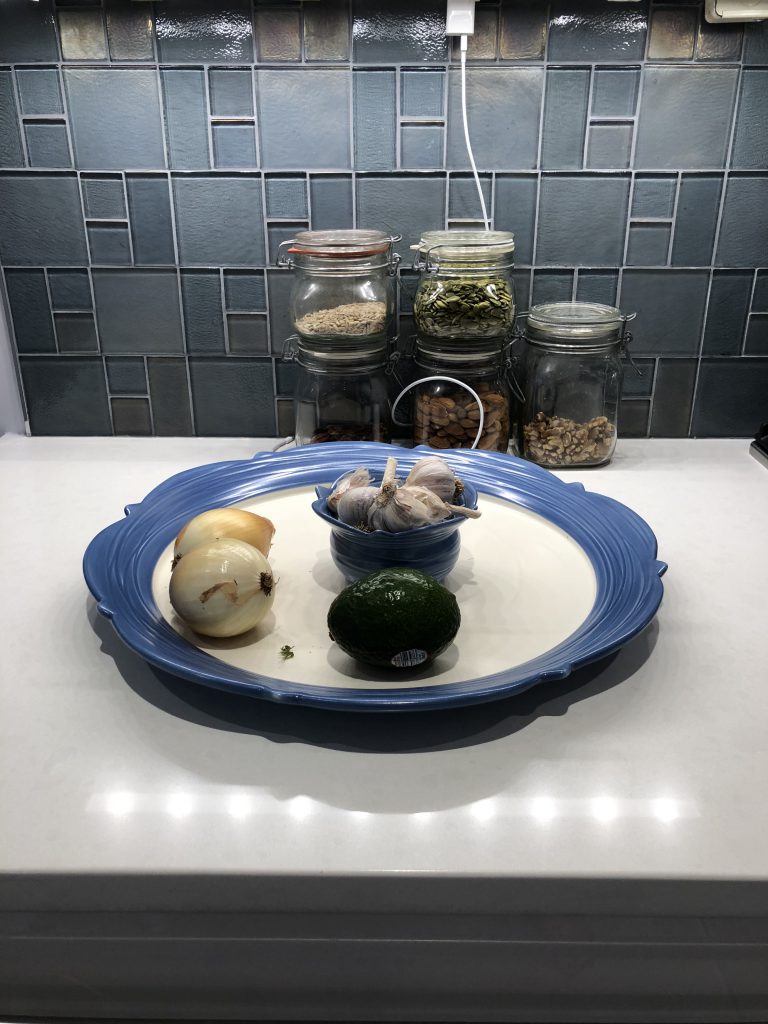

Recent Comments